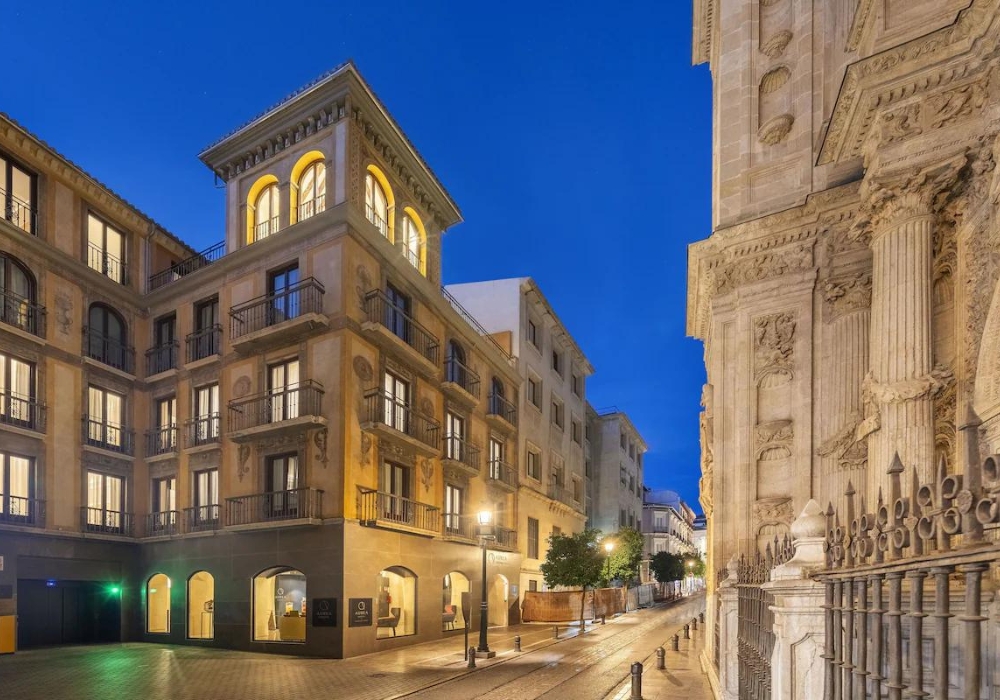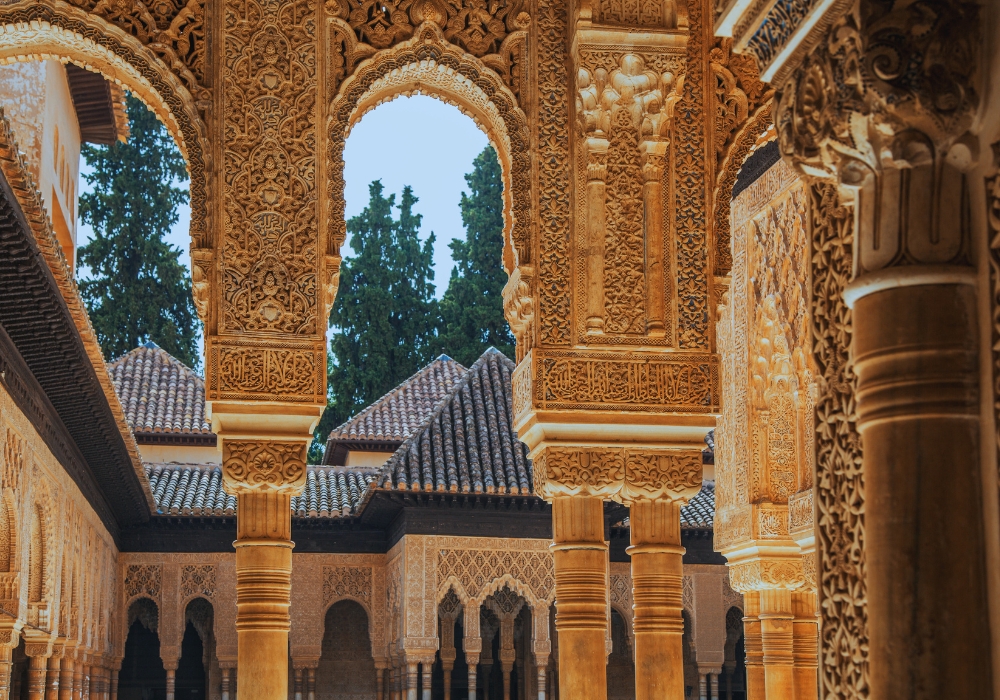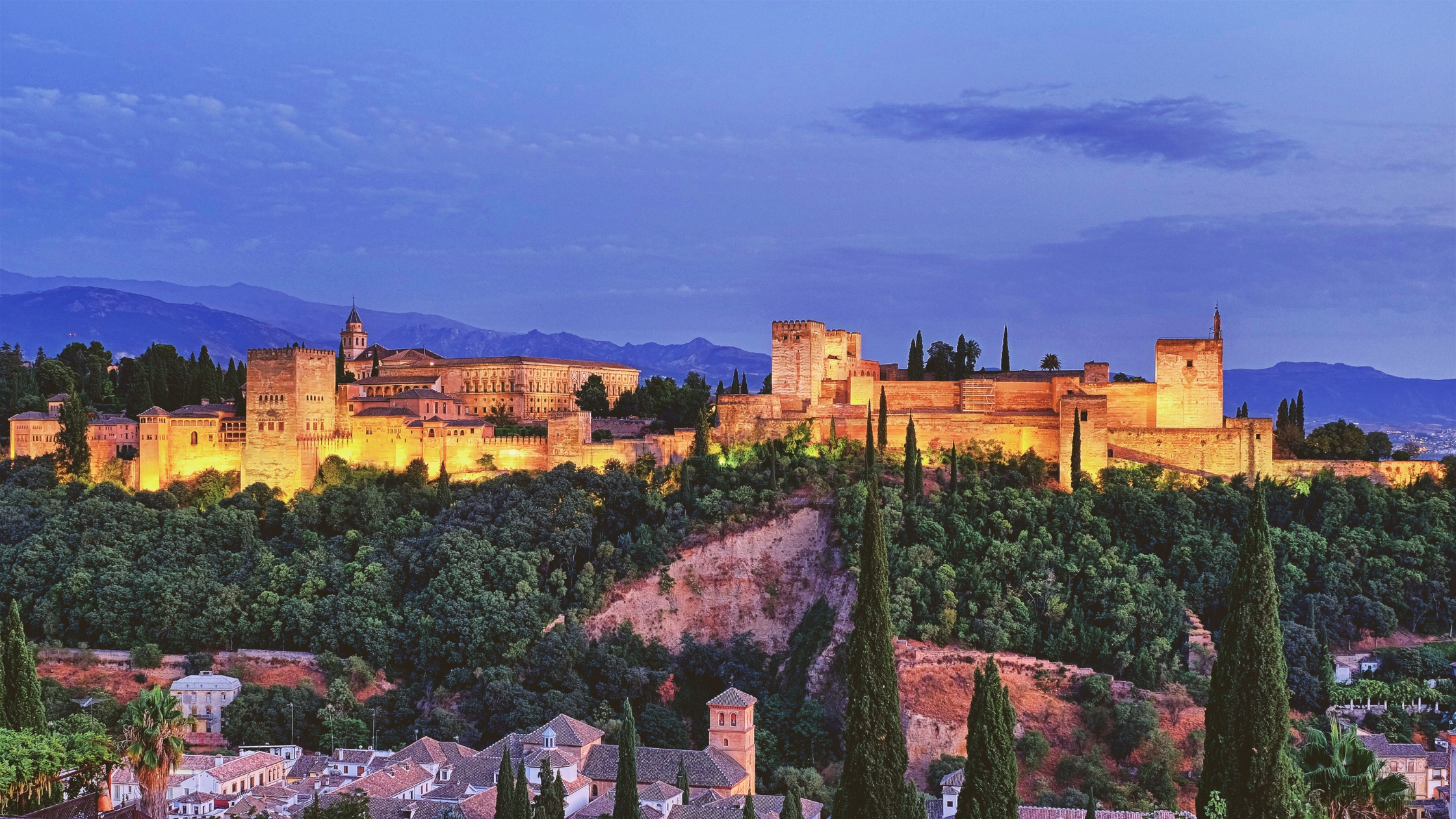The Alhambra is a stunning example of medieval Islamic architecture and art in Granada, Spain. It offers a vivid tableau of Islamic and European traditions and cultural confluence. This majestic fortress-palace complex, originally constructed as a small fortress in 889 AD on the remains of Roman fortifications, was rebuilt in the mid-13th century by the Nasrid emir Mohammed ben Al-Ahmar. It was later transformed into a royal palace in 1333 by Yusuf I, Sultan of Granada. Today, the Alhambra stands as a monument to the sophistication of Islamic art and culture at its peak in Andalusia.
Architectural Marvel
One of the most captivating aspects of the Alhambra is its architectural design, which incorporates traditional Islamic motifs and an ingenious use of water in its reflective pools, which serve as a counterpoint to the arid landscape of southern Spain. The intricate arabesques and Islamic calligraphy that adorn the walls and ceilings are made with superior craftsmanship, manifesting Islam’s spiritual and artistic expressions. These designs embody the artistic zenith of the last flourishing of Islamic culture in Spain and demonstrate the advanced stonework and tile decoration techniques that were unprecedented in medieval Europe at the time.

Cultural Exchange
Visiting the Alhambra deepens the understanding of medieval Islamic heritage and its extensive influence across the Mediterranean into European culture. The palace complex is a reminder of the Al-Andalus period. In this unique era, Muslims, Christians, and Jews lived together peacefully and shared cultural and intellectual insights. This interaction led to a significant transfer of knowledge in various fields, such as mathematics, astronomy, philosophy, and medicine, from the Islamic world to Europe, which played a crucial role in the Renaissance and shaped modern Western civilization.
Unique Experiences and Insights
For visitors, the Alhambra is an exploration of grand halls and tranquil gardens and a journey into the narrative of cultural resilience and exchange. Walking through the Generalife, the summer palace with its lush gardens and exquisite courtyards, one gains a sense of the Islamic appreciation of nature and the sophisticated agricultural practices quite advanced for their time.
Furthermore, the Alhambra’s location, perched on a hill overlooking Granada, allows visitors to experience the strategic military importance of the fortress. The panoramic views from the watchtowers provide a direct connection to the historical context, offering insights into how geography shaped the defensive strategy of the kingdom.

Scholarly Perspectives
From an art historian’s perspective, the Alhambra is a critical study of the evolution of Islamic art and architecture, reflecting the nuances of an era where culture and artistry were paramount. Islamic scholars might focus on the Alhambra as an example of Islamic spiritual and philosophical ideals materialized through architecture, particularly how Quranic principles are interwoven with the aesthetics of the design.
Archaeologists and historians of Medieval Europe might examine the layers of the Alhambra’s history, from its Roman foundations to its Islamic reconstructions and later Christian additions, showcasing the palimpsest of European and Islamic civilizations. Meanwhile, cultural anthropologists would find the Alhambra a rich site for understanding the complexities of cultural identity, power, and transformation in medieval Spain.
The Alhambra’s Enduring Legacy in Art and History
The Alhambra is more than a mere relic of the past; it is a living testament to the rich Islamic culture that once flourished in Spain and left a lasting impact on European history and culture. Visiting the Alhambra offers a deeper appreciation of its artistic and architectural brilliance and insight into the cultural exchanges it fostered. Each corner tells a story of convergence, divergence, and coexistence that is as relevant today as hundreds of years ago, making it a true cornerstone of cultural heritage and historical learning.


